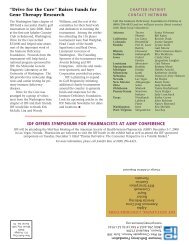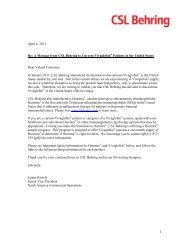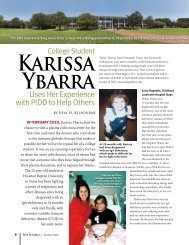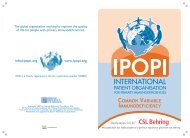IDF Patient & Family Handbook for Primary Immunodeficiency ... - IDFA
IDF Patient & Family Handbook for Primary Immunodeficiency ... - IDFA
IDF Patient & Family Handbook for Primary Immunodeficiency ... - IDFA
Create successful ePaper yourself
Turn your PDF publications into a flip-book with our unique Google optimized e-Paper software.
The Immune System And <strong>Primary</strong> <strong>Immunodeficiency</strong> Diseases 3<br />
CHAPTER 1; FIGURE 1<br />
Major Organs of the Immune System<br />
A<br />
D<br />
B<br />
E<br />
C<br />
F<br />
G<br />
A. Thymus: The thymus is an organ located in the upper chest. Immature<br />
lymphocytes leave the bone marrow and find their way to the thymus<br />
where they are “educated” to become mature T-lymphocytes.<br />
B. Liver: The liver is the major organ responsible <strong>for</strong> synthesizing proteins<br />
of the complement system. In addition, it contains large numbers of<br />
phagocytic cells which ingest bacteria in the blood as it passes through<br />
the liver.<br />
C. Bone Marrow: The bone marrow is the location where all cells of the<br />
immune system begin their development from primitive stem cells.<br />
D. Tonsils: Tonsils are collections of lymphocytes in the throat.<br />
E. Lymph Nodes: Lymph nodes are collections of B-lymphocytes and<br />
T-lymphocytes throughout the body. Cells congregate in lymph nodes<br />
to communicate with each other.<br />
F. Spleen: The spleen is a collection of T-lymphocytes, B-lymphocytes<br />
and monocytes. It serves to filter the blood and provides a site <strong>for</strong><br />
organisms and cells of the immune system to interact.<br />
G. Blood: Blood is the circulatory system that carries cells and proteins of<br />
the immune system from one part of the body to another.
















